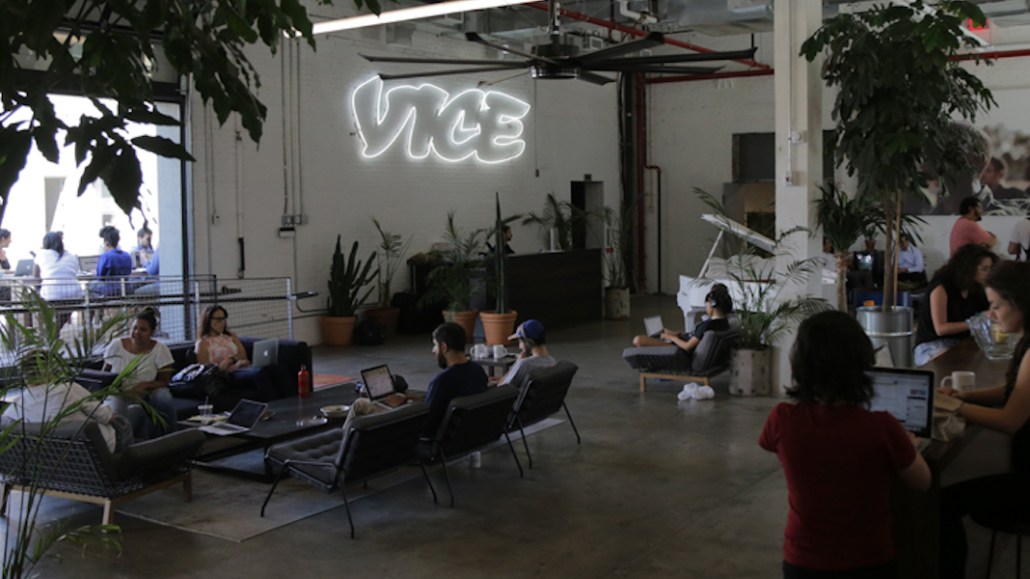
Since getting rid of intrusive ads and making other changes last year, Vice said people are spending twice as long viewing its ads as before.
Vice said that 275 minutes of ads are in view for every 1,000 impressions they are served. Prior to its redesign, Vice said that figure was 101 minutes for every 1,000 impressions, slightly below what Moat says is the industry standard of 128 minutes in the last quarter of 2016. Vice attributes this change to eliminating intrusive ad formats, speeding up the site and making the ads more targeted.
“We had some legacy systems that weren’t as effective at [keeping users engaged with ads] as we would have liked to be,” said Oliver Laubscher, Vice’s chief media officer. “But since we started to unify the sites, we’ve seen sharp increases.”
Vice removed intrusive ad units like overlays, 1600×250 desktop display ads and 320×50 “mobile leaderboard” banner ads, said John Koenigsberg, the company’s vp of media. Vice said on average, its users spend 2.6 minutes on its websites per visit. For comparison, among the top 100 news publishers, users spend 2.2 minutes on-site per visit on average, according to comScore.
These kinds of stats matter for publishers because advertisers are pushing for ads to be seen by actual humans and to be in view for longer periods of time. Publishers have to balance those demands against the need to keep users on-site. The benefit of having ads in view can be negated if it leads to more intrusive units that lead users to ad block.
Koenigsberg said as Vice adds new verticals, such as its health care website Tonic that launched in November, its audience data expands and becomes more nuanced, which can make ads more targeted and relevant.
Another reason ad viewing is up is speed, said Drake Martinet, vp of product.
Ad position: web_incontent_pos1
By investing in its own internal tech stack and pushing back on slow vendors, Vice said that in the past six months it reduced its average page-load time by about 50 percent and its average ad-load time by about 80 percent. This matters for advertising because getting ads to load faster means the ads come in view quicker, which can increase the length of time users view them.
The overlap in timing of Vice’s redesign with its development of proprietary tech has benefited the company.
“With a host of speed and design enhancements, we’re able to test new things and move more quickly,” Martinet said.
Photo via Vice
More in Media

NewFronts Briefing: Samsung, Condé Nast, Roku focus presentations on new ad formats and category-specific inventory
Day two of IAB’s NewFronts featured presentations from Samsung, Condé Nast and Roku, highlighting new partnerships, ad formats and inventory, as well as new AI capabilities.

The Athletic to raise ad prices as it paces to hit 3 million newsletter subscribers
The New York Times’ sports site The Athletic is about to hit 3 million total newsletter subscribers. It plans to raise ad prices as as a result of this nearly 20% year over year increase.

NewFronts Briefing: Google, Vizio and news publishers pitch marketers with new ad offerings and range of content categories
Day one of the 2024 IAB NewFronts featured presentations from Google and Vizio, as well as a spotlight on news publishers.
Ad position: web_bfu